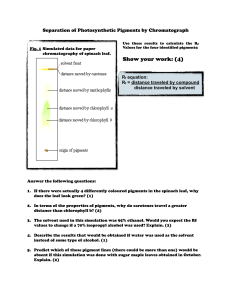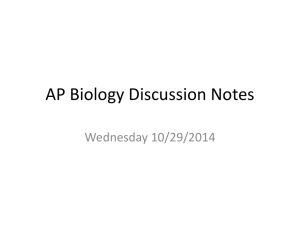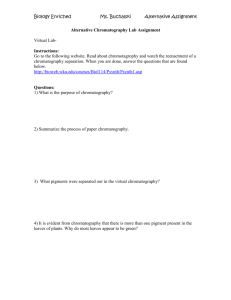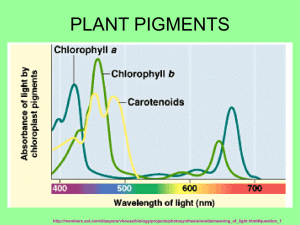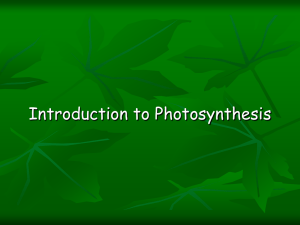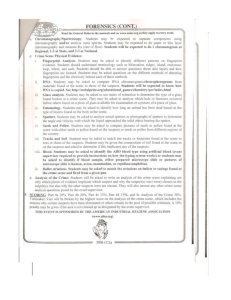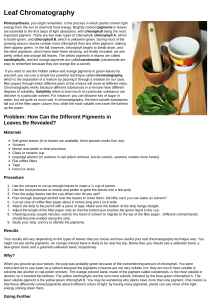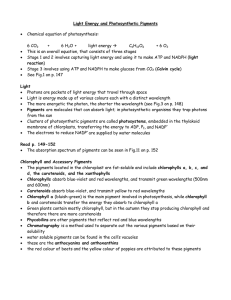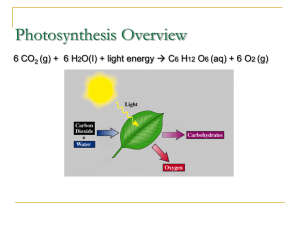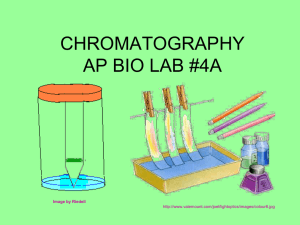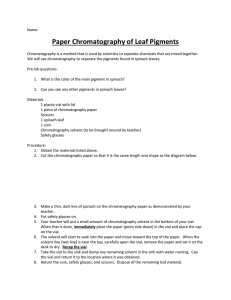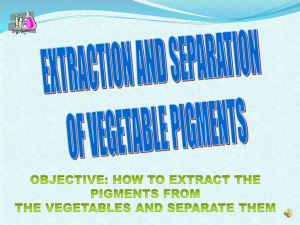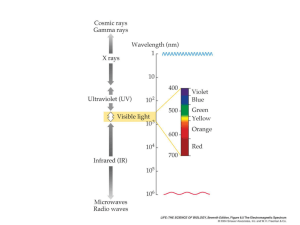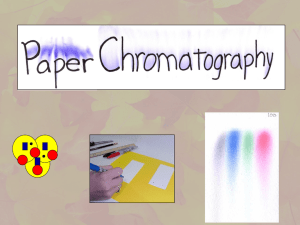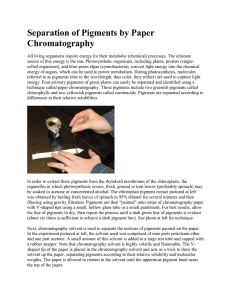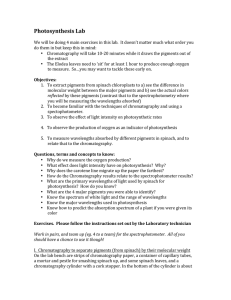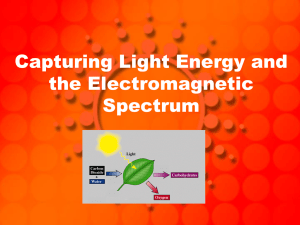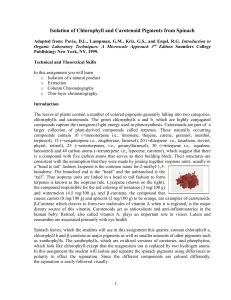What is paper chromatography?
advertisement
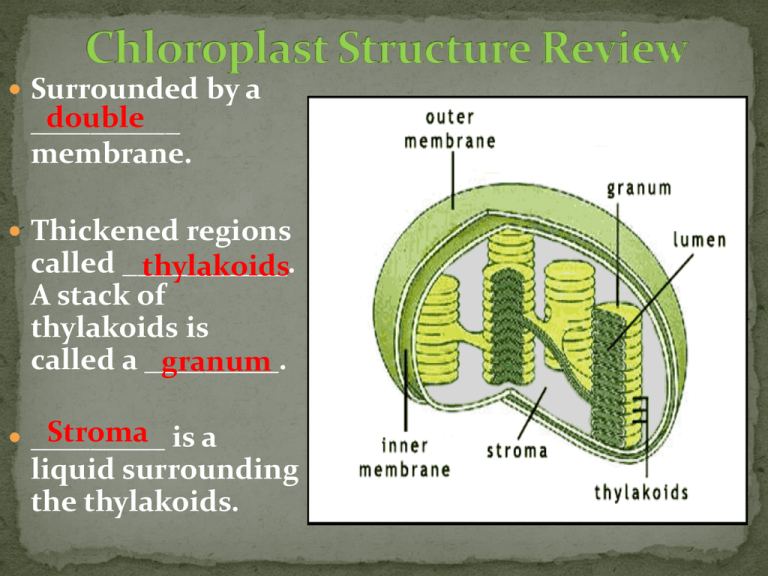
Surrounded by a double __________ membrane. Thickened regions called ___________. thylakoids A stack of thylakoids is called a _________. granum Stroma is a _________ liquid surrounding the thylakoids. Light regulates chlorophyll production, so as autumn days grow shorter, less chlorophyll is produced. The decomposition rate of chlorophyll remains constant, so the green color starts to fade from leaves. Pigments are light-absorbing compounds. Pigments appear colored because they absorb light of certain wavelengths and reflect that of others. Chlorophyll a is the primary pigment in green plants that absorbs red and blue/violet light and reflects green light. Other pigments called accessory pigments are also present in the leaf. Chlorophyll B Carotenoids (orange / red) Xanthophylls (yellow / brown) Each pigment absorbs a particular wavelength of light in the visible spectrum These pigments are embedded in the membranes of the chloroplast in groups called photosystems. A purple plant appears purple because it has high levels of anthocyanins and a fairly neutral pH. Red anthocyanins absorb UV light and protect the plants tissues from damage. The undersides of many rainforest floor plants are purple to reflect light absorbed by the top of the leaf….. (because green light absorbs red and blue light) back up to increase absorption by auxillary pigments like carotenoids. It is a method of separating the components of a mixture. During the procedure, the mixture will be separated into its individual components, allowing the individual parts to be identified. Chromatography is used to separate and identify all sorts of substances in police work. Drugs ranging from narcotics to aspirin can be identified in urine and blood samples, often with the aid of chromatography. Paper chromatography is a technique that involves placing a small dot or line of sample solution onto a strip of chromatography paper. The paper is then placed in a jar containing a shallow layer of solvent. As the solvent rises through the paper, it meets the sample mixture which starts to travel up the paper with the solvent. Spinach Step 1: Write your own hypothesis in an “If… then” format. You should have one hypothesis for spinach and one for radicchio. Step 2: Follow exact directions on how to collect your data for both samples according to the worksheet. Step 3: Clean your work station. Step 4: Be sure to have each portion of your lab report completed thoroughly. Yes.. It is due today.. And be sure to write your own! Procedure Hints

